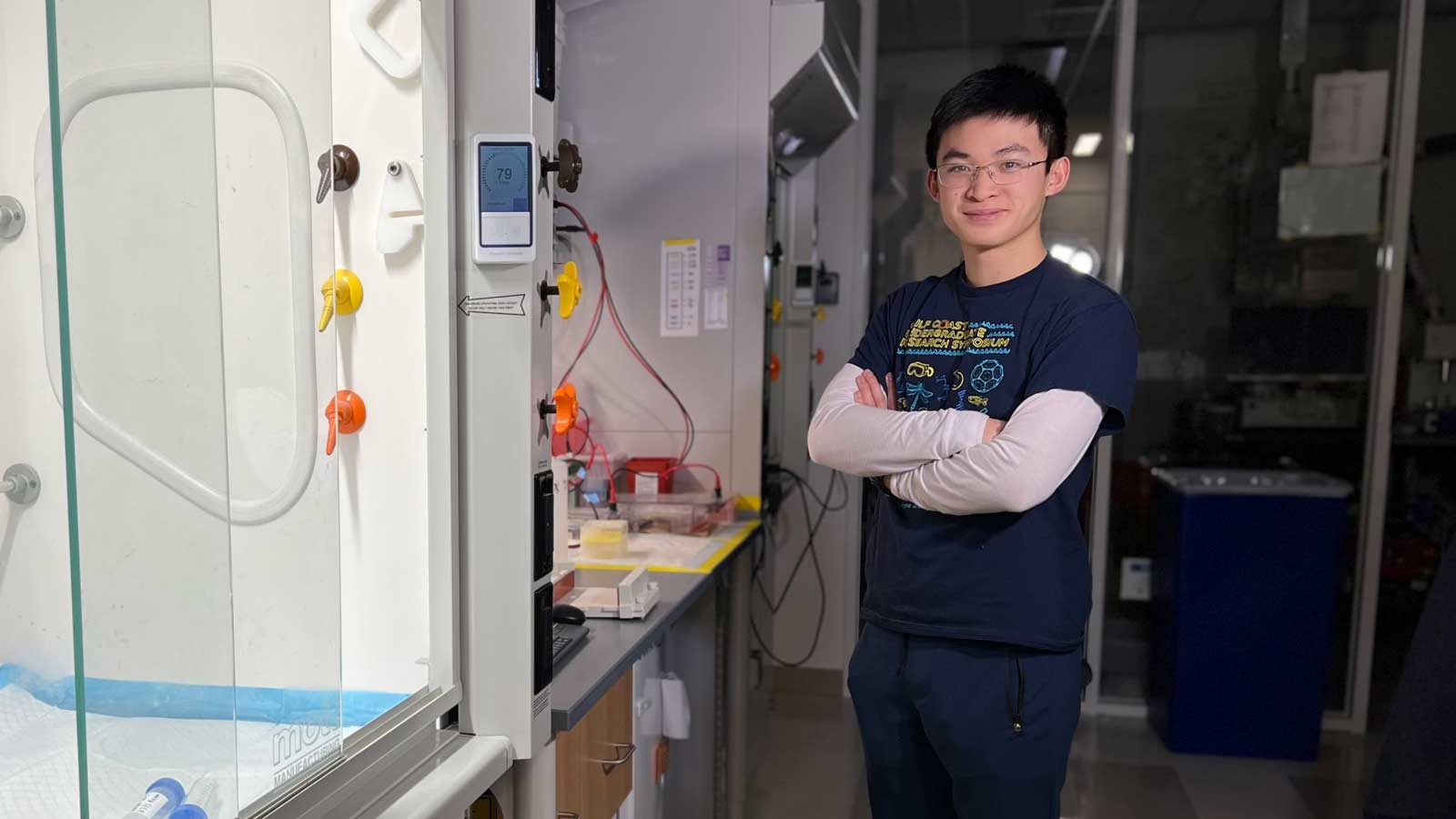Ryan Wang, a junior in neuroscience, computer science and cognitive science at Rice University, successfully applied for a research grant to further his work in noninvasive gene delivery, prompting his adviser, Jerzy Szablowski, to say, “You don’t see that every day.”
Wang has received a $644 grant from Sigma Xi, the Scientific Research Honor Society, for a project titled “Noninvasive Multiplexed Gene Delivery to the Brain.” He works in the Laboratory for Noninvasive Neuroengineering headed by Szablowski, an assistant professor of bioengineering at Rice.
The goal of Szablowski’s lab is to develop diagnostic methods and safer treatments for such neurological disorders as Parkinson’s disease.
“The method my research focuses on is called acoustically targeted chemogenetics, known as ATAC,” Wang said, “which can excite and inhibit neurons in the brain very precisely. Our lab investigates methods for monitoring and controlling the brain without doing any surgery.”
He hopes to extend the capabilities of ATAC, a procedure used successfully to modulate one site in the brain at a time. “Could we target two sites? Preliminary results suggest it’s possible. We would need to deliver two receptors to two parts of the brain. If successful, we could independently modulate different nodes of neural networks to treat complex disorders or study neural circuits.”
“Our approach,” Wang said, “can excite and inhibit neurons in the brain with cell-type, spatial and temporal precision. We first use focused ultrasound to temporarily open the blood-brain barrier, a border of cells between the neurons and blood.
“That lets us deliver genetic cargo to the neurons in that location. Those neurons encode specific receptors. When specific drugs bind to those receptors, they trigger a reaction that excites or inhibits the neurons.”

